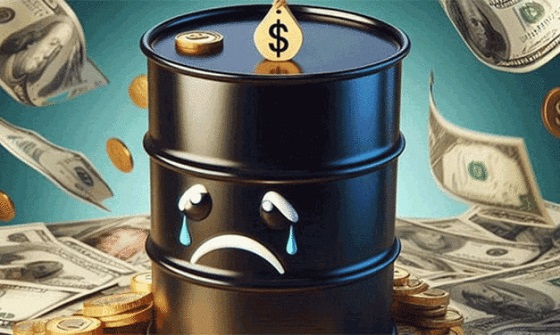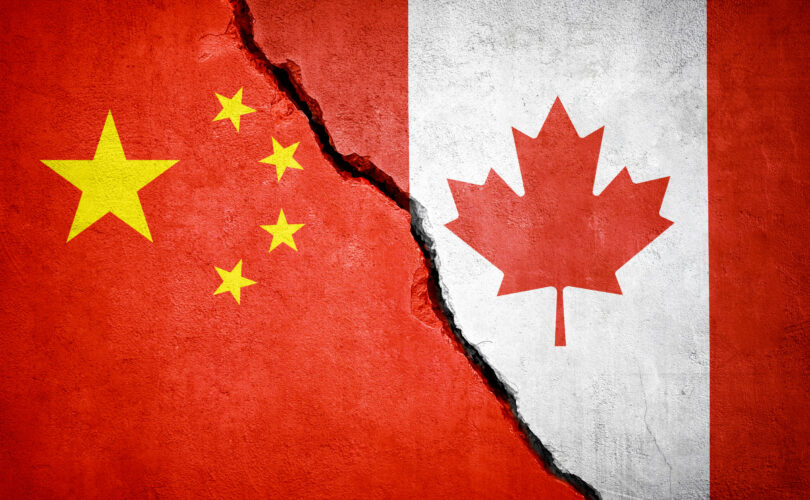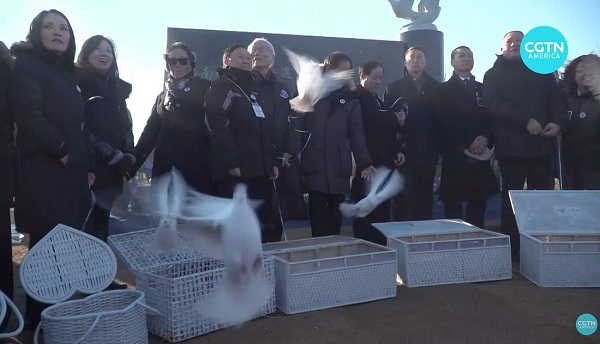Uncategorized
Talks to resume after Trump says shutdown could last ‘years’

WASHINGTON — White House officials and congressional staffers will continue negotiations Saturday over the government shutdown, even after President Donald Trump declared he could keep it going for “months or even years.”
Trump met Friday with congressional leaders from both parties as the shutdown hit the two-week mark amid an impasse over his demand for billions of dollars for a border wall with Mexico. Democrats emerged from the meeting, which both sides said was contentious at times, to report little if any progress.
Trump has designated
Trump is framing the upcoming weekend talks as progress, while Democrats are emphasizing families unable to pay bills.
The standoff has prompted economic jitters and anxiety among some in Trump’s own party. But he appeared Friday in the Rose Garden to frame the weekend talks as progress, while making clear he would not reopen the government.
“We won’t be opening until it’s solved,” Trump said. “I don’t call it a shutdown. I call it doing what you have to do for the benefit and the safety of our country.”
Trump said he could declare a national emergency to build the wall without congressional approval, but would first try a “negotiated process.” Trump previously described the situation at the border as a “national emergency” before he dispatched active-duty troops in what critics described as a pre-election stunt.
Trump also said the hundreds of thousands of federal workers who are furloughed or working without pay would want him to “keep going” and fight for border security. Asked how people would manage without a financial safety net, he declared, “The safety net is going to be having a strong border because we’re going to be safe.”
Democrats called on Trump to reopen the government while negotiations continue. Senate Democratic Minority Leader Chuck Schumer said, “It’s very hard to see how progress will be made unless they open up the government.”
Friday’s White House meeting with Trump included eight congressional leaders — the top two Democrats and Republicans of both chambers. People familiar with the session but not authorized to speak publicly described Trump as holding forth at length on a range of subjects but said he made clear he was firm in his demand for $5.6 billion in wall funding and in rejecting the Democrats’ request to reopen the government.
Trump confirmed that he privately told Democrats the shutdown could drag on for months or years, though he said he hoped it wouldn’t last that long. Said Trump, “I hope it doesn’t go on even beyond a few more days.”
House Democrats muscled through legislation Thursday night to fund the government but not Trump’s proposed wall. However, Senate Majority Leader Mitch McConnell has said those measures are non-starters on his side of the Capitol without the president’s support.
A variety of strategies are being floated inside and outside the White House, among them trading wall funding for a deal on immigrants brought to the country as young people and now here illegally, or using a national emergency declaration to build the wall. While Trump made clear during his press conference that talk on DACA (the Deferred Action for Childhood Arrivals program) would have to wait and that he was trying to negotiate with Congress on the wall, the conversations underscored rising Republican anxiety about just how to exit the shutdown.
Some GOP senators up for re-election in 2020, including Cory Gardner of Colorado and Susan Collins of Maine, have voiced discomfort with the shutdown in recent days.
But with staff level talks there is always an open question of whether Trump’s aides are fully empowered to negotiate for the president. Earlier this week, he rejected his own administration’s offer to accept $2.5 billion for the wall. That proposal was made when Pence and other top officials met with Schumer at the start of the shutdown.
During his free-wheeling session with reporters, Trump also wrongly claimed that he’d never called for the wall to be concrete. Trump did so repeatedly during his campaign, describing a wall of pre-cast concrete sections that would be higher than the walls of many of his rally venues. He repeated that promise just days ago.
“An all concrete Wall was NEVER ABANDONED, as has been reported by the media. Some areas will be all concrete but the experts at Border Patrol prefer a Wall that is see through (thereby making it possible to see what is happening on both sides). Makes sense to me!” he tweeted Dec. 31.
Trump was joined by Pence in the Rose Garden, as well as House Republican leaders Kevin McCarthy and Steve Scalise. McConnell, who went back to the Capitol, unaware of the press conference, said it was encouraging that the White House officials and the congressional contingent would meet over the weekend “to see if they can reach an agreement and then punt it back to us for final sign off.”
Schumer said that if McConnell and Senate Republicans stay on the sidelines, “Trump can keep the government shut down for a long time.”
“The president needs an intervention,” Schumer said. “And Senate Republicans are just the right ones to intervene.”
Adding to national unease about the shutdown are economic jitters as analysts warn of the risks of closures that are disrupting government operations across multiple departments and agencies at a time of other uncertainties in the stock market and foreign trade.
___
Associated Press writers Alan Fram, Mary Clare Jalonick, Laurie Kellman, Kevin Freking, Matthew Daly, Deb Riechmann and Eileen Putman contributed to this report.
Catherine Lucey, Lisa Mascaro And Jill Colvin, The Associated Press
Uncategorized
Cost of bureaucracy balloons 80 per cent in 10 years: Public Accounts

The cost of the bureaucracy increased by $6 billion last year, according to newly released numbers in Public Accounts disclosures. The Canadian Taxpayers Federation is calling on Prime Minister Mark Carney to immediately shrink the bureaucracy.
“The Public Accounts show the cost of the federal bureaucracy is out of control,” said Franco Terrazzano, CTF Federal Director. “Tinkering around the edges won’t cut it, Carney needs to take urgent action to shrink the bloated federal bureaucracy.”
The federal bureaucracy cost taxpayers $71.4 billion in 2024-25, according to the Public Accounts. The cost of the federal bureaucracy increased by $6 billion, or more than nine per cent, over the last year.
The federal bureaucracy cost taxpayers $39.6 billion in 2015-16, according to the Public Accounts. That means the cost of the federal bureaucracy increased 80 per cent over the last 10 years. The government added 99,000 extra bureaucrats between 2015-16 and 2024-25.
Half of Canadians say federal services have gotten worse since 2016, despite the massive increase in the federal bureaucracy, according to a Leger poll.
Not only has the size of the bureaucracy increased, the cost of consultants, contractors and outsourcing has increased as well. The government spent $23.1 billion on “professional and special services” last year, according to the Public Accounts. That’s an 11 per cent increase over the previous year. The government’s spending on professional and special services more than doubled since 2015-16.
“Taxpayers should not be paying way more for in-house government bureaucrats and way more for outside help,” Terrazzano said. “Mere promises to find minor savings in the federal bureaucracy won’t fix Canada’s finances.
“Taxpayers need Carney to take urgent action and significantly cut the number of bureaucrats now.”
Table: Cost of bureaucracy and professional and special services, Public Accounts
| Year | Bureaucracy | Professional and special services |
|
$71,369,677,000 |
$23,145,218,000 |
|
|
$65,326,643,000 |
$20,771,477,000 |
|
|
$56,467,851,000 |
$18,591,373,000 |
|
|
$60,676,243,000 |
$17,511,078,000 |
|
|
$52,984,272,000 |
$14,720,455,000 |
|
|
$46,349,166,000 |
$13,334,341,000 |
|
|
$46,131,628,000 |
$12,940,395,000 |
|
|
$45,262,821,000 |
$12,950,619,000 |
|
|
$38,909,594,000 |
$11,910,257,000 |
|
|
$39,616,656,000 |
$11,082,974,000 |
Uncategorized
Trump Admin Establishing Council To Make Buildings Beautiful Again


From the Daily Caller News Foundation
By Jason Hopkins
The Trump administration is creating a first-of-its-kind task force aimed at ushering in a new “Golden Age” of beautiful infrastructure across the U.S.
The Department of Transportation (DOT) will announce the establishment of the Beautifying Transportation Infrastructure Council (BTIC) on Thursday, the Daily Caller News Foundation exclusively learned. The BTIC seeks to advise Transportation Secretary Sean Duffy on design and policy ideas for key infrastructure projects, including highways, bridges and transit hubs.
“What happened to our country’s proud tradition of building great, big, beautiful things?” Duffy said in a statement shared with the DCNF. “It’s time the design for America’s latest infrastructure projects reflects our nation’s strength, pride, and promise.”
“We’re engaging the best and brightest minds in architectural design and engineering to make beautiful structures that move you and bring about a new Golden Age of Transportation,” Duffy continued.
Mini scoop – here is the DOT’s rollout of its Beautifying Transportation Infrastructure Council, which will be tasked with making our buildings beautiful again. pic.twitter.com/
9iV2xSxdJM — Jason Hopkins (@jasonhopkinsdc) October 23, 2025
The DOT is encouraging nominations of the country’s best architects, urban planners, artists and others to serve on the council, according to the department. While ensuring that efficiency and safety remain a top priority, the BTIC will provide guidance on projects that “enhance” public areas and develop aesthetic performance metrics.
The new council aligns with an executive order signed by President Donald Trump in August 2025 regarding infrastructure. The “Making Federal Architecture Beautiful Again” order calls for federal public buildings in the country to “respect regional architectural heritage” and aims to prevent federal construction projects from using modernist and brutalist architecture styles, instead returning to a classical style.
“The Founders, in line with great societies before them, attached great importance to Federal civic architecture,” Trump’s order stated. “They wanted America’s public buildings to inspire the American people and encourage civic virtue.”
“President George Washington and Secretary of State Thomas Jefferson consciously modeled the most important buildings in Washington, D.C., on the classical architecture of ancient Athens and Rome,” the order continued. “Because of their proven ability to meet these requirements, classical and traditional architecture are preferred modes of architectural design.”
The DOT invested millions in major infrastructure projects since Trump’s return to the White House. Duffy announced in August a $43 million transformation initiative of the New York Penn Station in New York City and in September unveiledmajor progress in the rehabilitation and modernization of Washington Union Station in Washington, D.C.
The BTIC will comprise up to 11 members who will serve two-year terms, with the chance to be reappointed, according to the DOT. The task force will meet biannually. The deadline for nominations will end Nov. 21.
-

 Business2 days ago
Business2 days agoGeopolitics no longer drives oil prices the way it used to
-

 Business2 days ago
Business2 days agoArgentina’s Milei delivers results free-market critics said wouldn’t work
-

 Business2 days ago
Business2 days agoDeadlocked Jury Zeroes In on Alleged US$40 Million PPE Fraud in Linda Sun PRC Influence Case
-

 Business1 day ago
Business1 day agoTaxing food is like slapping a surcharge on hunger. It needs to end
-

 International1 day ago
International1 day agoOttawa is still dodging the China interference threat
-

 COVID-191 day ago
COVID-191 day agoJudge denies Canadian gov’t request to take away Freedom Convoy leader’s truck
-

 espionage1 day ago
espionage1 day agoCarney Floor Crossing Raises Counterintelligence Questions aimed at China, Former Senior Mountie Argues
-

 Energy1 day ago
Energy1 day ago75 per cent of Canadians support the construction of new pipelines to the East Coast and British Columbia










